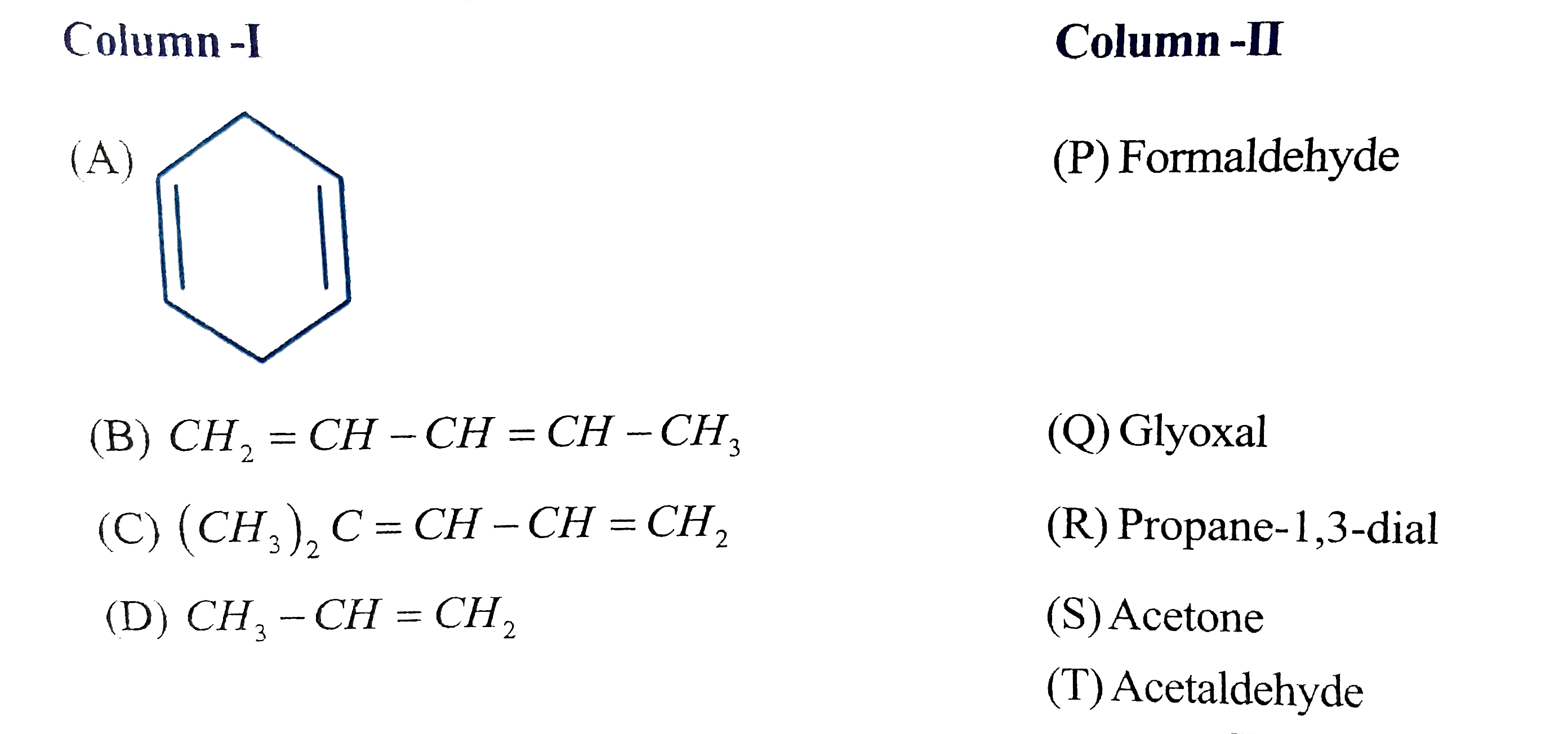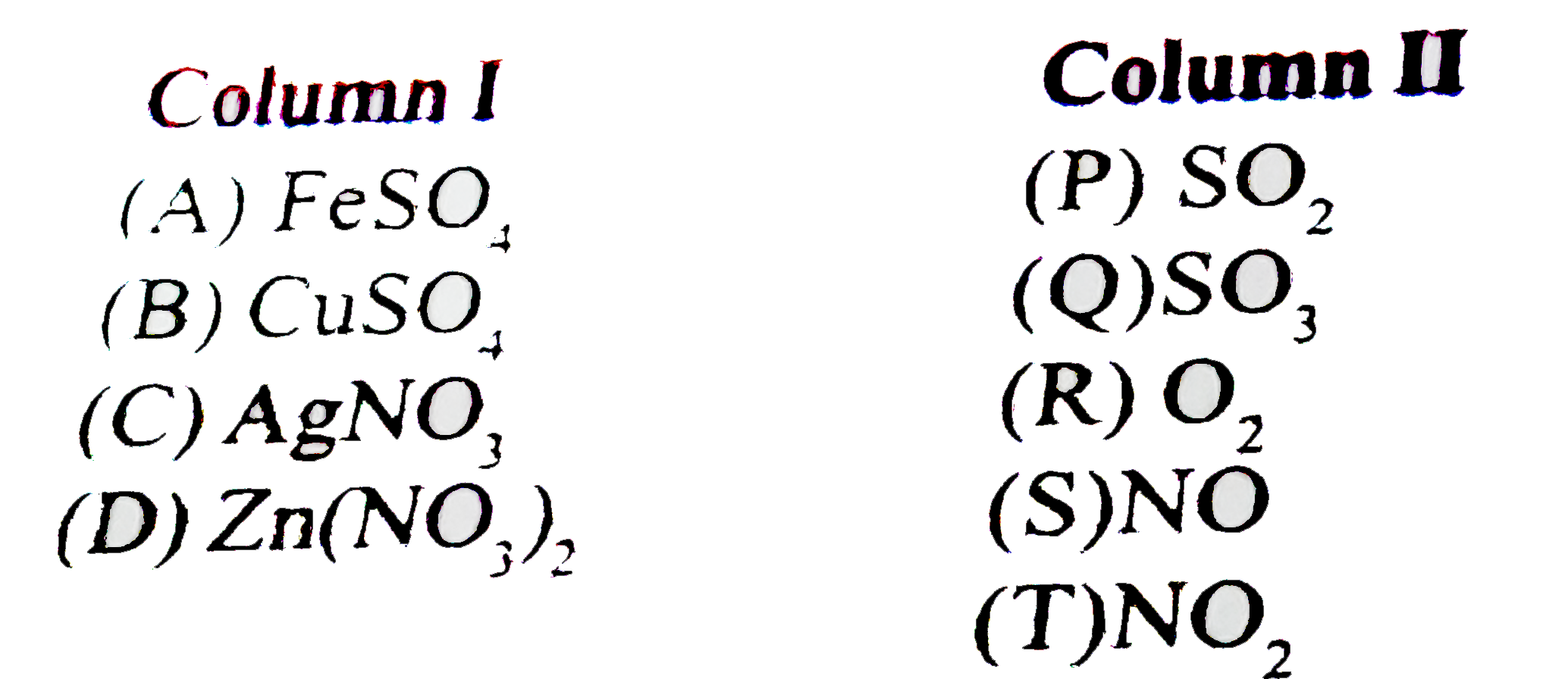Match each of the compound in Column-I with the product of reductive ozonolysis in Column-II
 Solution in Telugu
Solution in Telugu
The correct Answer is:A-R ; B-PQT ; C-PQS ; D - PT
Cyclo hexadiene- Propane-1,3-dial ,
CH2=CH−CH=CH−CH3 - Formaldehyde, Glyoxal , Acetaldehyde ,
(CH3)2C=CH−CH=CH2 - Formaldehyde , Glyoxal , Acetone . ,
CH3−CH=CH2 - Formaldehyde , Acetaldehyde
Topper's Solved these Questions
- HYDROCARBONSBOOK - AAKASH SERIESCHAPTER - HYDROCARBONSEXERCISE - PRACTICE SHEET (EXERCISE - V (LEVEL-I (STRAIGHT OBJECTIVE TYPE QUESTIONS )))
19 Videos
- HYDROCARBONSBOOK - AAKASH SERIESCHAPTER - HYDROCARBONSEXERCISE - PRACTICE SHEET (EXERCISE - V (LEVEL-II (STRAIGHT OBJECTIVE TYPE QUESTIONS )))
14 Videos
- HYDROCARBONSBOOK - AAKASH SERIESCHAPTER - HYDROCARBONSEXERCISE - PRACTICE SHEET (EXERCISE - IV (LEVEL-II (INTEGER TYPE QUESTIONS )))
1 Videos
- GENERAL ORGANIC CHEMISTRYBOOK - AAKASH SERIESCHAPTER - GENERAL ORGANIC CHEMISTRYEXERCISE - QUESTIONS FOR DESCRIPTIVE ANSWERS
35 Videos
- HYDROGEN AND ITS COMPOUNDSBOOK - AAKASH SERIESCHAPTER - HYDROGEN AND ITS COMPOUNDSEXERCISE - QUESTIONS FOR DESCRIPTIVE ANSWERS
20 Videos
Similar Questions
Aromatic compounds containing benzene are termed as
View SolutionA petroleum fraction having boiling point range 70−200∘C and containing 6-10 carbon atoms per molecule is called
View SolutionThe no of moles of CO2, formed during the oxidation of CH2=CH−CH=CH2 with acidified KMnO4 is
View SolutionMention the hybridisation stste of each carbon in the following compounds.
CH3−CH=C=O,CH3−C≡C−CH3,CH3COCH3andCH2=CHCN
View SolutionWhy the use of hard water is disadvantages?
View SolutionMatch each of the compounds given in compounds gives in Column I with the reaction (s), that they can undergo, given in column II

View SolutionMatch each of the compound in column I with the product of reductive ozonolysis in column-II

View SolutionMatch the compounds in column I with the products obtained on heating them in column II :

View SolutionMatch each of the following compound in column-I with the characteristic reaction in column-II
View SolutionMatch each of the compound in column I with the product of reductive ozonolysis in column-II

View SolutionMatch the reactions in Column I with the types of products/the use of products in Column II.

View SolutionMatch the compounds of column -I with the reagent of column -II , which can distinguish between the compounds of column -I
View SolutionMatch the terms in column I with those in column II :
Column IColumn II(a)Compound epithelium (i) Bone(b)Osteocytes (ii) Skin
View SolutionMatch the catalysts (column I) with products (Column II)
View SolutionMatch the catalysts ( column I ) with products ( Column II)
View Solution
